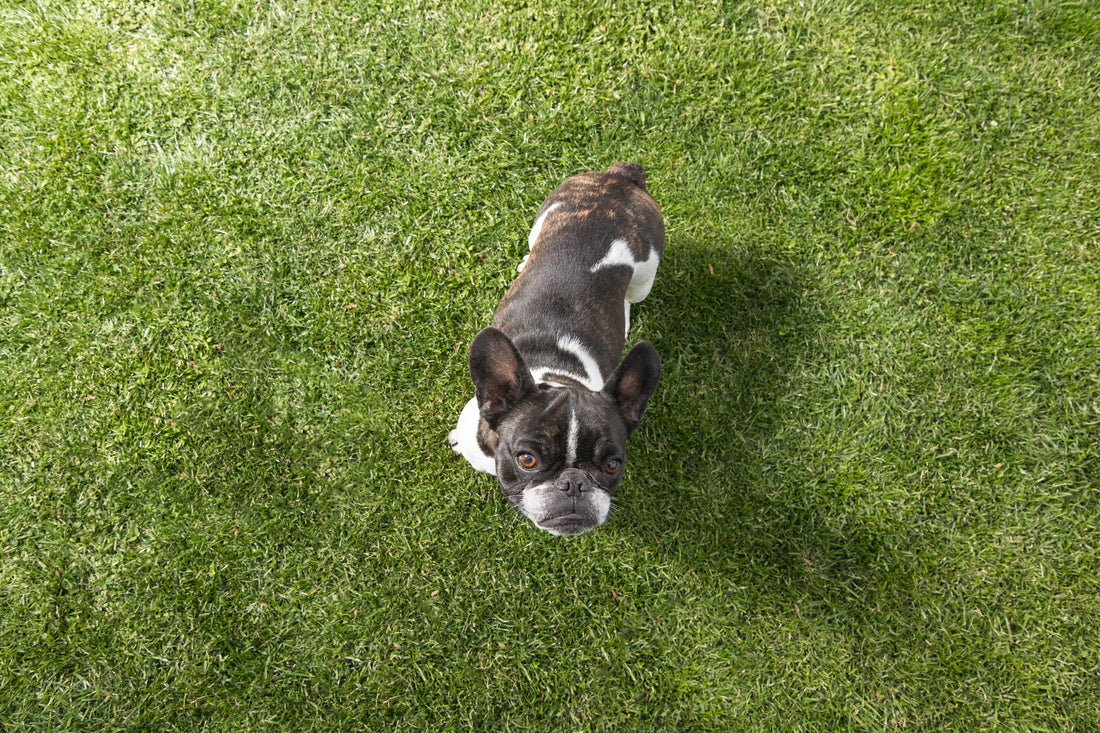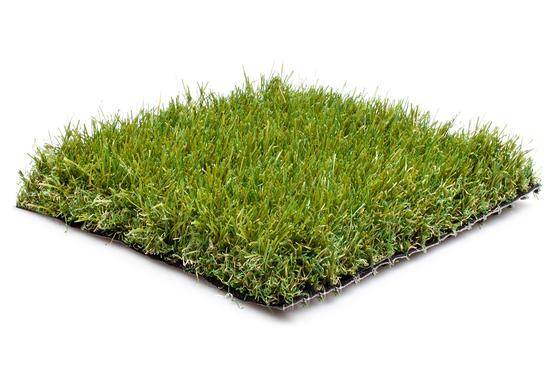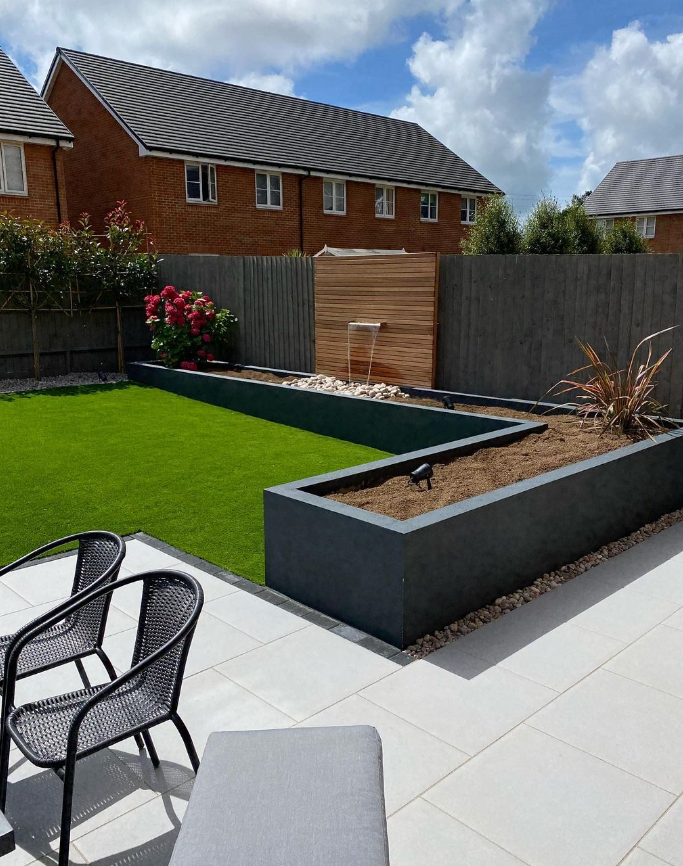
The Ultimate Guide to Cleaning Artificial Grass for Dog Owners
Plenty of dog owners are swapping muddy lawns for low-hassle artificial grass – and honestly, it’s easy to see why. You get a clean, green garden all year round, no holes to patch up, and far less mess making its way back indoors on paws and shoes.
But here’s the part most pet owners get a bit stuck on: how to clean artificial grass with dogs using it every day. It’s one of those things that can seem more complicated than it really is. The idea of lingering odours, bacteria, and muddy mishaps can be off-putting if you’re not sure what works or what’s safe to use around your pets.
The truth is, though, keeping your lawn fresh is completely manageable – with a few simple habits, the right gear, and a routine that suits your space. And no, you don’t need to be a cleaning expert or spend hours scrubbing.
This guide will walk you through practical steps for day-to-day tidying, cleaning pet urine from artificial grass, and choosing the best cleaner for artificial grass dog urine. You’ll learn how to prevent smells, maintain that just-installed look, and make sure your outdoor space is as pet-friendly as it is people-friendly.
Understand How Artificial Grass Works With Pets

Benefits of artificial grass for dog owners
It’s not just about avoiding muddy paws, though, let’s face it, that alone is a big win. For dog owners, artificial grass offers a surface that stands up to zoomies, toilet breaks, and year-round garden fun without wearing out or turning patchy. It’s soft underfoot, dries quickly after a rinse, and there’s no soil for your dog to dig through or roll around in.
More than that, it gives you consistency. No reseeding, no mowing, and no stress over patch repairs after a wet week or a particularly ‘playful’ afternoon. You’ll spend less time fixing your lawn, and more time enjoying it – whether that’s relaxing with a cuppa or watching your dog roll about like they own the place.
And if your garden doubles as a play space for kids? You’re covered there too. Pet friendly artificial grass is designed to be safe, easy to clean, and tough enough for both paws and feet.
Common concerns about hygiene and odour
Let’s talk straight – the worry over cleaning pet urine from artificial grass is one of the main things that makes people hesitate. But it’s rarely as bad as it sounds. With a good rinse, pet mess doesn’t soak into turf the way it might in soil or real grass. And with the right infill or cleaner, smells don’t stick around either.
Still, without a cleaning routine, it can build up – especially in warm weather. That’s where artificial grass odour removal products come in handy. Enzyme-based cleaners are great because they break down organic compounds, not just mask them.
Another common worry? Bacteria. But most modern artificial lawns are designed to drain well and dry fast – both key to stopping bacteria from settling in. Add a regular spray-down into your weekly rhythm and it’ll stay fresh without much fuss.
Pet-safe materials and installation tips
You want your lawn to be tough, but not at the cost of your dog’s comfort – or safety. Luckily, pet-safe artificial grass cleaners and infills are easy to find, and most well-made synthetic lawns are non-toxic and free from anything nasty like lead or latex.
When it comes to installation, good drainage is the secret sauce. You’ll want a proper base layer beneath the turf (usually a crushed stone sub-base) to let liquids pass through quickly. That way, pet urine doesn’t linger and smells don’t build up.
Also, consider using a deodorising infill such as zeolite – it’s a natural mineral that helps trap ammonia from urine before it causes a stink. If you’re setting things up from scratch, it’s worth asking your installer about these extras. They’re small steps that make a huge difference in how easy things are later.
Daily and Weekly Cleaning Routines

Keeping your turf clean doesn’t mean scrubbing on your hands and knees every day. In fact, most of the effort comes down to staying consistent with small steps that stop smells, mess, and bacteria from building up in the first place.
Remove solid waste promptly
It’s a bit of a no-brainer, but still worth saying: the sooner you scoop, the better. Dog waste left too long can dry out, stain, or create a smell that’s harder to shift. That doesn’t mean sprinting out the moment your pup squats – but a quick once-over after they’ve done their business keeps things in check.
Use a standard scoop or bag, just like you would on walks, but skip anything sharp that could damage the fibres. If it’s particularly sticky or stuck, a gentle rinse beforehand loosens things nicely. The goal here isn’t perfection – just keeping things manageable.
Rinse with water to eliminate residue
Water alone does a lot more than people expect. Giving your artificial lawn a quick rinse, especially after your dog’s gone to the toilet, helps prevent build-up and breaks down any lingering smell.
Use a regular garden hose with a spray attachment – nothing high-pressure, just enough to lift and flush away the residue. Focus on your dog’s favourite loo spot, or any areas where there’s been a mess. It’s fast, simple, and keeps the whole garden smelling fresher.
For those who’ve got sprinkler systems, it’s even easier – you can schedule occasional rinses to do the work for you. Otherwise, a couple of minutes with a hose every other day is enough for most households.
Brush grass fibres to maintain appearance
Artificial grass doesn’t just clean better when it’s upright – it looks better too. But after a few weeks of dogs playing, lying down, or racing across it, the blades can flatten out. That’s where a good brushing session makes all the difference.
You can use a stiff broom, but proper power brushes will give you better results with less effort. These are built to lift and fluff turf fibres back up to their best. Brush against the grain of the grass – that’s in the opposite direction to where it naturally leans – to get the fibres standing tall again.
Brushing also stops loose fur, leaves, dust, and dirt from working their way into the pile, which helps with artificial turf cleaning tips long-term. Make it part of your weekly tidy-up routine and you’ll notice how much fresher everything looks and feels.
Do’s and Don’ts
Do:
-
Pick up pet waste quickly
-
Rinse key areas every couple of days
-
Brush weekly against the grain
-
Use pet-safe products when needed
-
Spot clean accidents right away
Don’t:
-
Leave solid waste to dry out
-
Forget shaded or hidden corners
-
Use strong chemical sprays
-
Scrub with metal or wire brushes
-
Ignore changes in drainage or texture
Deep Cleaning for Odour and Bacteria Control

Even with daily maintenance ticking along nicely, artificial grass still benefits from a more thorough clean every now and again – especially if your dog’s a regular user or has a go-to toilet patch. Deep cleaning not only handles the smell, but also helps control bacteria, which is especially important for pet health and your peace of mind.
Use pet-safe artificial grass cleaners
When water won’t cut it, it’s time to bring in a pet-safe artificial grass cleaner. These are specially designed for turf and won’t damage the fibres, stain the surface, or cause irritation to paws. Most come in spray or concentrate form, and they’re simple to use – just mix according to the label, spray generously, and rinse after letting it sit for a few minutes.
The trick is using something enzyme-based, as these cleaners go beyond surface-level dirt. They break down the organic compounds in urine and faeces, dealing with the root cause of the smell instead of covering it up with perfumes.
If your lawn sees heavy use – maybe you’ve got more than one dog, or a smaller garden where they go in the same spot – doing this every couple of weeks will make a big difference. Think of it as a hygiene top-up.
Apply enzyme-based treatments regularly
Enzyme-based cleaners might sound fancy, but they’re basically your secret weapon for cleaning pet urine from artificial grass. They contain natural compounds that eat away at the bacteria that causes odours – meaning they tackle the smell at source, not just on the surface.
For the best results, start by rinsing the area with plain water to remove any loose residue. Then apply your enzyme cleaner liberally – don’t be shy with it, especially in high-use areas. You don’t need to scrub; just let the solution sit and do its thing. Once it dries, the enzymes keep working in the background.
If the weather’s warmer or your dog is a frequent visitor to the same spot, it’s worth repeating this process every couple of weeks. It’s especially effective when combined with deodorising infills, which absorb moisture and neutralise smell over time.
Disinfect without damaging the surface
Now and then, you might want to go even deeper – especially after illness, wet weather, or just before guests come over. Disinfecting the turf helps with peace of mind, but it’s important to choose the right method.
Avoid bleach or any high-strength disinfectants unless they’re clearly labelled as turf-safe. These can break down the turf backing or irritate your dog’s skin. Instead, go for diluted white vinegar (one part vinegar to three parts water) or commercial disinfectants made for synthetic grass.
Spray on, let it sit for a few minutes, then rinse thoroughly. That’s it – no scrubbing, no drama.
Cleaner Comparison Table
|
Cleaner Type |
Best For |
Safe for Pets? |
How Often? |
|
Enzyme-based cleaner |
Urine, odour control |
✅ Yes |
Every 2–4 weeks |
|
Diluted white vinegar mix |
Light disinfection, mould prevention |
✅ Yes |
Monthly |
|
Turf disinfectant sprays |
Deep cleaning, bacteria control |
✅ Yes |
As needed |
|
Bleach-based products |
Strong disinfection – not turf-safe |
❌ No |
Avoid completely |
Seasonal Maintenance Tips
Artificial grass is built to handle the outdoors, but just like any outdoor feature, a few extra touches each season will help it stay clean, safe, and great-looking all year round. Whether it's winter damp or summer sun, a bit of planning keeps your dog-friendly fake grass maintenance smooth and stress-free.
Address drainage issues during wet months
Autumn and winter in the UK bring their fair share of soggy days. If your turf starts pooling with water or feels boggy underfoot, it’s a sign that the drainage isn’t coping. This could be from blocked edges, compacted infill, or debris like leaves clogging things up.
Start by brushing the surface to remove anything sitting on top – leaves, fur, and mud tend to gather in corners. Then inspect the edges where your turf meets paths, patios, or flowerbeds. These are common spots for water to collect.
If drainage continues to be an issue, it might be time to top up the infill or speak to a professional about improving the sub-base beneath the turf. Getting it right under the surface makes a big difference when the heavens open.
Prevent mould and moss in shaded areas
Shaded garden corners can be magnets for damp – and where there’s damp, mould and moss often follow. These aren’t just unsightly, they can make turf slippery and shorten its lifespan.
First off, keep the airflow moving. That might mean occasionally shifting plant pots or garden furniture to let the grass breathe. A good brush once a month helps too – it stops the fibres from compacting and lets moisture evaporate more easily.
If you start to see green or black spots forming, a spray of diluted white vinegar usually does the trick. For bigger build-ups, go with a turf-safe moss or algae treatment. Just rinse well afterwards, and let it dry naturally.
Check infill levels and top up if needed
Infill isn’t just there to hold the turf down – it cushions steps, helps drainage, and in the case of deodorising infills, it can soak up smells before they become noticeable. Over time though, it wears down, especially in high-use zones.
Every few months, give your turf a quick once-over. If it feels too soft or patchy underfoot, it’s time to add more. Pay special attention to the spots where your dog spends most of their time.
Using a pet odour infill like zeolite is a great choice. It absorbs moisture and neutralises smells, helping with long-term freshness. You can apply it by hand or use a spreader, then brush it in for an even finish.
Preventative Measures for Long-Term Cleanliness
The best way to keep your artificial grass looking good – and smelling fresh – over the long haul is to get ahead of the mess. A few clever habits and setup choices will save you loads of time and hassle later. These aren’t about working harder, just working a bit smarter.
Train your dog to use specific areas
Dogs are creatures of habit, which means you can guide their toilet routine with a little patience. If your pup has a favourite spot (or if you’d like them to pick one), use subtle boundaries to nudge them that way – like plant pots, low fencing, or a section of natural gravel.
Give them a reward when they use the right area and be consistent with direction. Over time, your dog will start going in the same place without prompting. This makes cleaning up quicker and helps you keep the rest of your lawn fresher, longer.
Install proper drainage under the turf
Drainage isn’t the most glamorous part of garden planning, but it’s easily one of the most important. If your artificial grass is sitting on top of poor drainage, no amount of surface cleaning will help in the long run.
For those installing new turf, speak to your installer about using a crushed stone base, like limestone or granite. These materials allow urine and rainwater to drain away quickly, which helps with both hygiene and durability.
Already have turf down? Regular brushing and leaf clearing can stop blockages and let existing drainage do its job properly.
Use deodorising infills or sprays
In between deep cleans, a pet odour infill like zeolite can be a game changer. It absorbs ammonia from dog urine and neutralises bad smells before they even get a chance to rise.
For quick refreshes, a pet-safe deodorising spray can be applied once a week or after heavy use. They’re easy to apply and help maintain freshness between enzyme treatments.
Keeping your artificial grass clean when you’ve got a dog running around might seem like a bit of a job at first, but honestly? It’s far more straightforward than most expect. With a few regular habits, the right cleaner, and a bit of seasonal upkeep, your lawn can stay fresh, safe, and looking great year-round.
Hopefully, this guide’s helped clear up the big questions around how to clean artificial grass with dogs – and shown that it’s not just doable, it’s totally manageable.
So, hose in hand, spray at the ready – you’ve absolutely got this.


